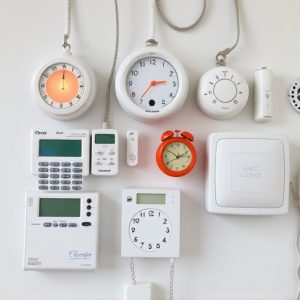Wearable Security Devices: Personal Alarm Sound & Coverage Area Explained
Wearable security devices, disguised as wristbands or pendants, use sensors to detect hazards and em…….
Wearable security devices, disguised as wristbands or pendants, use sensors to detect hazards and emit a powerful Personal Alarm Sound within a specific Coverage Area to alert others and summon help. The effectiveness of these devices depends on both high-decibel alarms (over 100 dB) and a suitable Coverage Area (50-100 feet), enabling users to escape safely while alerting authorities. Choosing a wearable device with a wide Personal Alarm Sound Coverage Area ensures robust protection, offering peace of mind in various settings, from homes to crowded events, through features like customizable signal strength and mobile alerts for quick emergency response.
In today’s world, wearable security devices with mobile alerts offer unprecedented personal protection. These innovative tools allow users to quickly call for help in case of emergencies, leveraging advanced technology like GPS tracking and personal alarm sounds. Understanding how they work is crucial for maximizing their effectiveness. This article delves into the mechanics of these devices, focusing on key aspects such as personal alarm sound coverage area, and the benefits of mobile alerts for peace of mind.
- Understanding Wearable Security Devices: How They Work
- Personal Alarm Sound: Effective Distance and Decibel Level
- Coverage Area Considerations for Optimal Protection
- Mobile Alerts: Features and Benefits for Peace of Mind
Understanding Wearable Security Devices: How They Work
Wearable security devices, often in the form of sleek and discrete wristbands or pendants, are designed to offer individuals an extra layer of protection in their daily lives. These innovative tools integrate advanced technology to detect potential hazards and alert users through a personal alarm sound. The device typically uses sensors to monitor various factors like motion, impact, or sudden changes in environment, triggering an instant response when suspicious activity is detected.
Once activated, the wearable emits a high-decibel personal alarm sound within its specified coverage area. This area can vary based on the device’s capabilities, ranging from a few meters to broader ranges, ensuring that help arrives promptly, even in situations where the wearer cannot communicate directly. The coverage area is crucial in ensuring the effectiveness of these devices, making them ideal for outdoor activities, personal safety in unfamiliar places, or for individuals living or working alone.
Personal Alarm Sound: Effective Distance and Decibel Level
When it comes to wearable security devices with mobile alerts, one of the critical factors is the personal alarm sound. The effectiveness of an alarm depends on both its decibel level and the coverage area it can reach. High-decibel alarms (typically above 100 dB) are more likely to startle a potential attacker and draw attention, increasing the chance of scaring them away or attracting help.
The personal alarm sound’s range is equally important. Devices designed for self-defense should have a coverage area that allows users to activate the alarm from a safe distance, usually between 50 to 100 feet (depending on environmental factors), ensuring the user has time to escape and alert others. This feature makes it easier to deter potential harm without putting oneself in immediate danger.
Coverage Area Considerations for Optimal Protection
When considering wearable security devices with mobile alerts, one crucial factor is the Coverage Area for optimal protection. These devices often rely on a personal alarm sound to deter threats and alert authorities or contacts. Therefore, ensuring the device’s signal strength and range can significantly impact their effectiveness. Users should consider if the device offers enough Personal Alarm Sound coverage to reach nearby help in case of an emergency, whether at home, outdoors, or in crowded spaces.
Optimal placement and configuration of sensors are essential for comprehensive protection. Devices designed with broader coverage areas enable users to maintain peace of mind, knowing they have a reliable safety net. This is especially important in large properties, public gatherings, or remote locations where the risk of unauthorized access or unexpected hazards may be higher.
Mobile Alerts: Features and Benefits for Peace of Mind
Wearable security devices with mobile alerts offer a range of features designed to provide peace of mind. One of the standout components is the Personal Alarm Sound, which can be triggered in moments of distress, immediately alerting nearby individuals or emergency services. This alarm sound is typically loud and distinct, ensuring it captures attention quickly.
The Coverage Area of these devices is another significant benefit. Users can customize and control the geographic boundary within which they receive alerts on their mobile devices. Whether it’s a personal safety net around your home, workplace, or during outdoor activities, this feature allows for tailored protection. Mobile alerts provide an instant connection to assistance, empowering users with quick response times in case of emergencies.
Wearable security devices with mobile alerts offer a powerful combination of protection and peace of mind. By understanding how these devices work, optimizing personal alarm sound levels and coverage area, and leveraging the benefits of mobile alerts, individuals can enhance their safety in today’s world. Incorporating these innovative tools into daily routines ensures that help is always nearby, whether navigating bustling urban landscapes or exploring remote areas.


